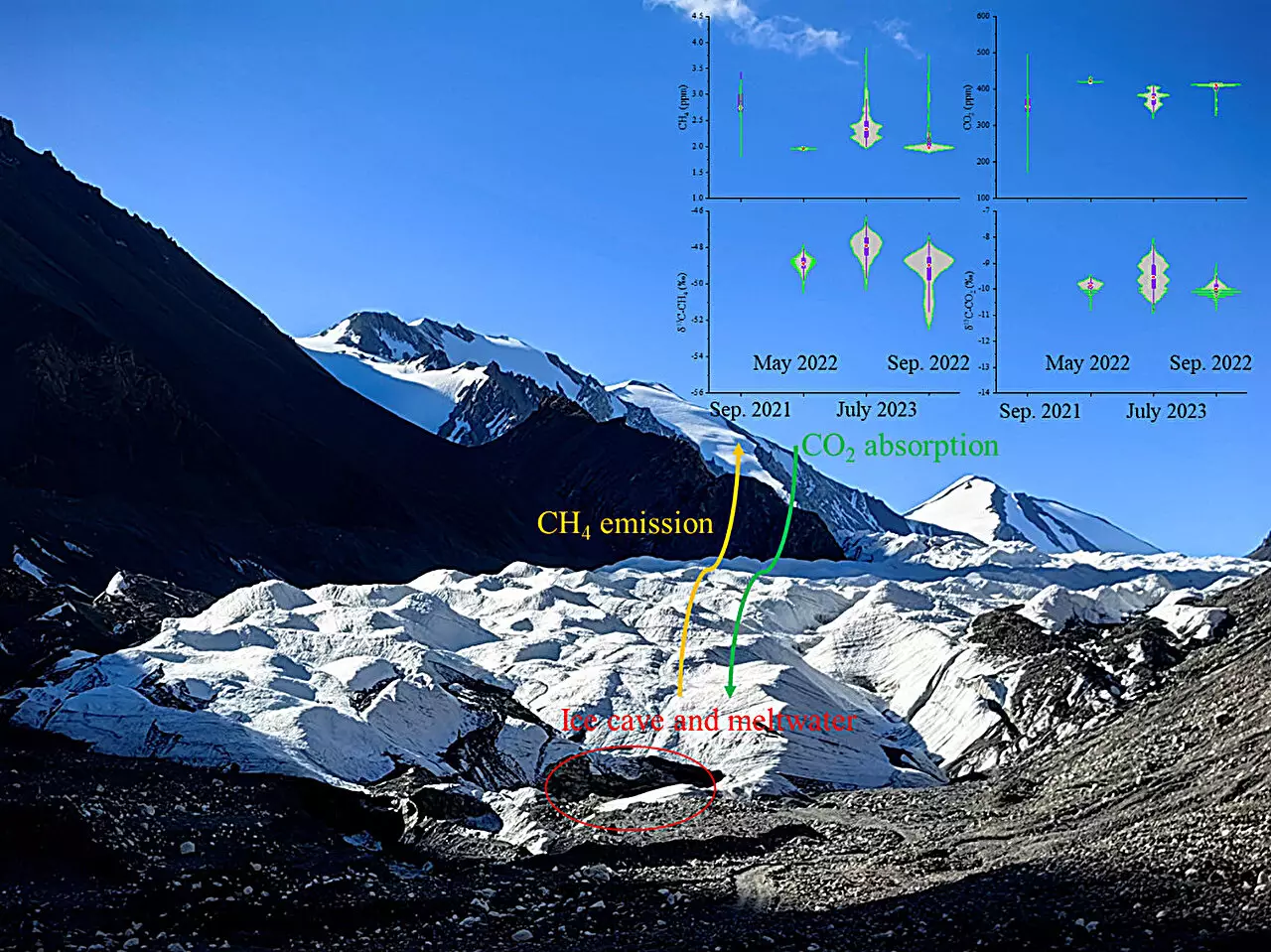The phenomenon of high mountain glaciers receding has gained alarming momentum since the 1980s. This retreat is not merely an aesthetic alteration of our majestic landscapes but signals profound changes in our ecological and climatic structures. The consequential augmentation of glacier runoff is only the tip of the iceberg; we are left grappling with its complex implications on greenhouse gas emissions and carbon balances within these pristine environments. The stark reality remains: even as glaciers disclose their secrets through melting, our understanding of whether this process releases greenhouse gases or rather absorbs them remains unresolved.
Illuminating Research Initiatives
Amidst the uncertainties surrounding glacier dynamics, a pivotal study spearheaded by Du Zhiheng from the Northwest Institute of Eco-Environment and Resources casts light on the environmental repercussions of glacier meltwater. Collaborating with esteemed institutions like Beijing Normal University and Lanzhou University, the team meticulously documented the concentrations of methane and carbon dioxide over a critical span from 2021 to 2023. Their focus on the Laohugou No.12 Glacier—the largest glacier in the Qilian Mountains—offers essential insights into microbial processes thriving in ice caves.
Methane Emissions: A Surprising Discovery
During their extensive fieldwork, which included four comprehensive campaigns, the researchers unearthed intriguing patterns regarding methane and carbon dioxide levels. The recorded rise in methane levels to 5.7 ppm signifies an unexpected twist in the carbon budget narrative, indicating active biogenic processes driven by melting ice. The concurrent drop in carbon dioxide levels points to labyrinthine interactions between microbial life and the melting ice. The notable spike in methane concentrations during peak ablation periods (mid-July 2023) reveals a direct correlation with climatic events, hinting at the intricate interplay between ice, water, and atmospheric conditions.
Isotopic Revelations in the Underground Ice Caves
Employing carbon isotope analyses, the researchers peeled back layers of knowledge about methane production, revealing that a substantial portion stemmed from acetoclastic methanogenesis—a process by which certain microorganisms decompose organic matter. Nevertheless, it’s crucial not to disregard thermogenic contributions, which underline the complexity of methane’s origin within these glacial terrains. Furthermore, variable meteorological influences like wind patterns and runoff amplify the emission fluctuations, compounding the challenge of forming comprehensive models for future climate predictions.
Broader Implications of Glacier Retreat
Beyond local ecosystems, the ramifications of glacier melting spiral into global climate concerns. Recent data underscores an alarming statistic: approximately 17.2% of small glaciers in China have vanished over the last fifty years. This rapid depletion and the consequent formation of ice caves and subglacial channels elevate the potential for significant methane emissions into the atmosphere. As these channels grow, they become conduits for not just water but also a variety of gases that can enhance climate change, ultimately leading to further glacial retreat.
As we delve into these intricate dynamics, the findings underscore the urgent need for a deeper understanding of glacier interactions with climate systems. The ongoing exploration into this field may very well serve as the conduction path that reveals our role in changing these vital ecosystems and highlights how interconnected our terrestrial and atmospheric systems truly are.

